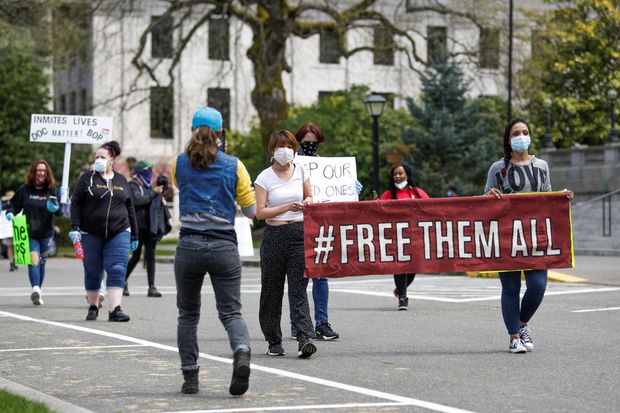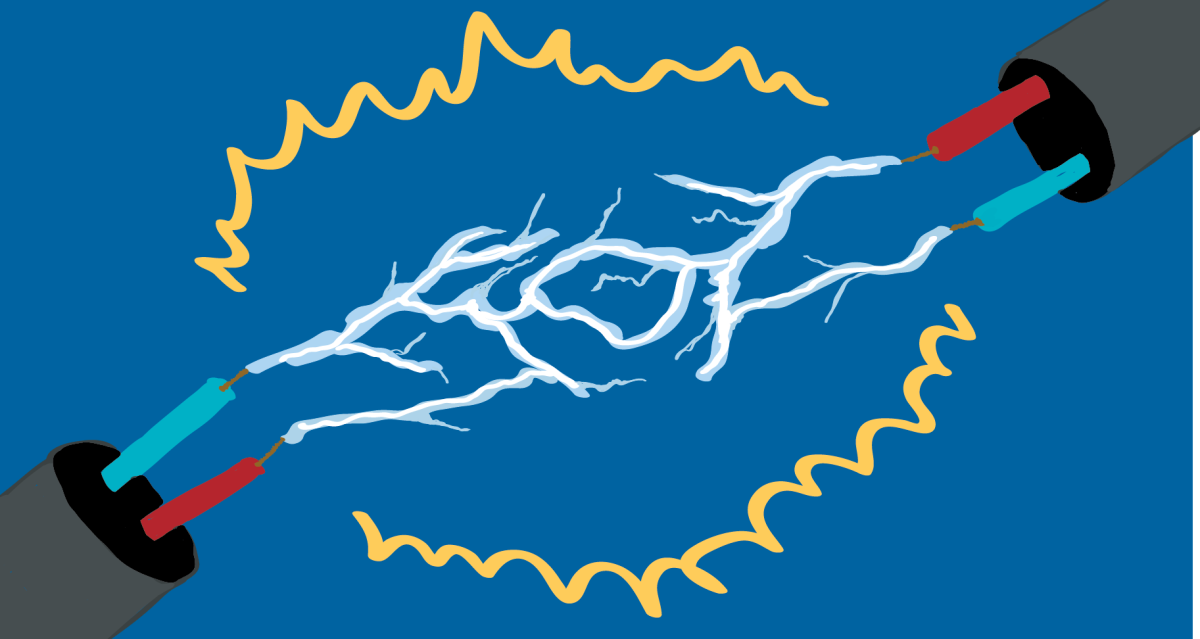As of April 16, more than 16,000 US inmates have been released due to COVID-19, the novel coronavirus.
Most prisoners released in California had to have been convicted for nonviolent crimes and have completed at least 50 percent of their sentence, or have fewer than 30 days left of it. Since the outbreak of the coronavirus, the Bay Area has cut their inmate populations by more than 3000 by releasing inmates and reducing new bookings.
Some think that it would be good for the prisoners to see how the world has changed as a model for how they could as well. Most inmates never get time out of prison while serving a sentence, and it can sometimes affect their mental health. Due to the pandemic and the risk of spreading the virus within prisons, it could be beneficial to the inmates to get time outside.
Carlos Osuna, a Woodside sophomore, believes that “if given a taste of freedom, [prisoners] might gain motivation to behave well and possibly shorten their sentences.”
On the other hand, Osuna thinks that the situation gets complicated with the inmates that have life sentences but are also at high risk of becoming infected. He argues that those with life sentences could still be considered a danger to the public and therefore should not be released.
“If there are inmates that are very high-risk and have life sentences, my opinion is that they should stay in their prisons to complete their terms,” Osuna stated. “Once the other inmates who are convicted of lesser crimes are gone, the chances of an outbreak might drop dramatically, which would make it safer for some to stay behind.”
Due to the pandemic, California put into place a zero-bail policy. This means that criminals charged with misdemeanor crimes or other lower felonies could be released without posting bail. This was meant to limit the spread of the virus within jails. However, the pandemic still made its way inside. One extreme example of how this policy went awry is detailed in the case of Dijon Landrum.
Landrum was arrested three times in one day for attempting to drive a stolen vehicle, taking items from residence’s front yard, and possession of a stolen vehicle. Because of the zero-bail policy, Landrum was able to be released with no charges and merely a citation for each crime, which all occurred within less than 24 hours. The leniency of the zero-bail policy allows some criminals to run rampant while the infection rates within prisons continue to grow. Another controversial measure for reducing prison infections was enacted by New York Mayor Bill de Blasio, who released more than 650 inmates from jail in New York City during the months of March and April.
The Center for Disease Control [CDC] recommends strong guidelines to avoid infection; often, within jails communities, the exact opposite is happening. Inmates are packed tightly together and they eat, sleep, and use the restrooms sometimes within inches of each other. One inmate described his situation as “being doomed.” He says that his neighbor is no more than three feet away from him, and if you were to sneeze, there would be no way to avoid contamination. In this sense, we have to look at the humanitarian aspect of keeping inmates imprisoned together during a worldwide pandemic. Prisons are fertile grounds for infections.
Most inmate populations already represent vulnerable communities, including the elderly, those with poor health, and minorities. According to the CDC website, “current data suggest a disproportionate burden of illness and death among racial and ethnic minority groups.” We know that 38 percent of prisoners are black and 21 percent are Hispanic. This information comes from the Bureau of Justice Statistics. This data alone could be useful in acknowledging the need to prevent contagion or possible untimely death in these institutions. Not to mention, early releases could minimize the exposure to the staff and correctional officers that make up part of the communities.
Osuna thinks that all people, including prisoners, deserve a second chance in life, especially considering the circumstances.
“It’s an honor system thing, but sometimes you need to have faith in humanity,” Osuna explained. “When talking about this, you’ve got to keep in mind that we’re all human beings.”
Some think that the inmates should stay in prison no matter the circumstances, and I agree. Depending on the situation of the prisoner and their criminal charges, those who have been convicted of murder or similar serious crimes should most definitely stay in prison because they could still prove to be a danger to society. Another solution for those not allowed to leave prisons early is to enforce social distancing within newly vacated cells. It is fair that those with lesser charges are able to go and serve their sentences from home.
According to social psychology studies, people are known to change habits by finding meaning in their lives, which is an intrinsic motivator. When being released from prison, inmates may feel meaning because society has given them a second chance. This could lead to the individual in finding self-worth and hope in a new life. The feeling of being trapped in a prison with an invisible enemy can be the cause of severe emotional discomfort or pain, which can cause someone to take a deep look within and promote change.
That being said, this virus may be the motivation some needed to make lifestyle changes that could benefit us all in the long run. This is not meant to ignore or minimize the suffering and lonely deaths that many have suffered as a result of this pandemic. On the contrary, it is the pain that will ultimately be teaching the deepest lesson to appreciate what we have and what others don’t.
Also, we can take a closer, deeper look at how quickly society tends to throw certain ethnicities behind bars, creating a recipe for disaster. We should take the time to rehabilitate instead of just incarcerate. Some inmates’ release from prison could spark a change that they didn’t know they needed. Some may result in a change in order to stay out of prison and live a new lifestyle where they don’t have to turn to crime to fend for themselves. We can ask ourselves what is wrong with the current systems we have in place and how can we improve them so that crime would be decreased.
As for Dijon Landrum, he is one example of someone who took advantage of the zero-bail policies, as others will do so as well. Landrum ruined his chances of being considered for early release later on. Human beings are diverse, and I don’t think that we should treat everyone with the same iron fist. Some may take the first time to be incarcerated and learn a valuable lesson. Some may fear for their lives due to the invisible enemy and use that as a motivation for change. People shouldn’t be judged on their past but should be inspired to look forward to their future and be guided to change. In my opinion, keeping all people in prison during a pandemic is not the answer.








